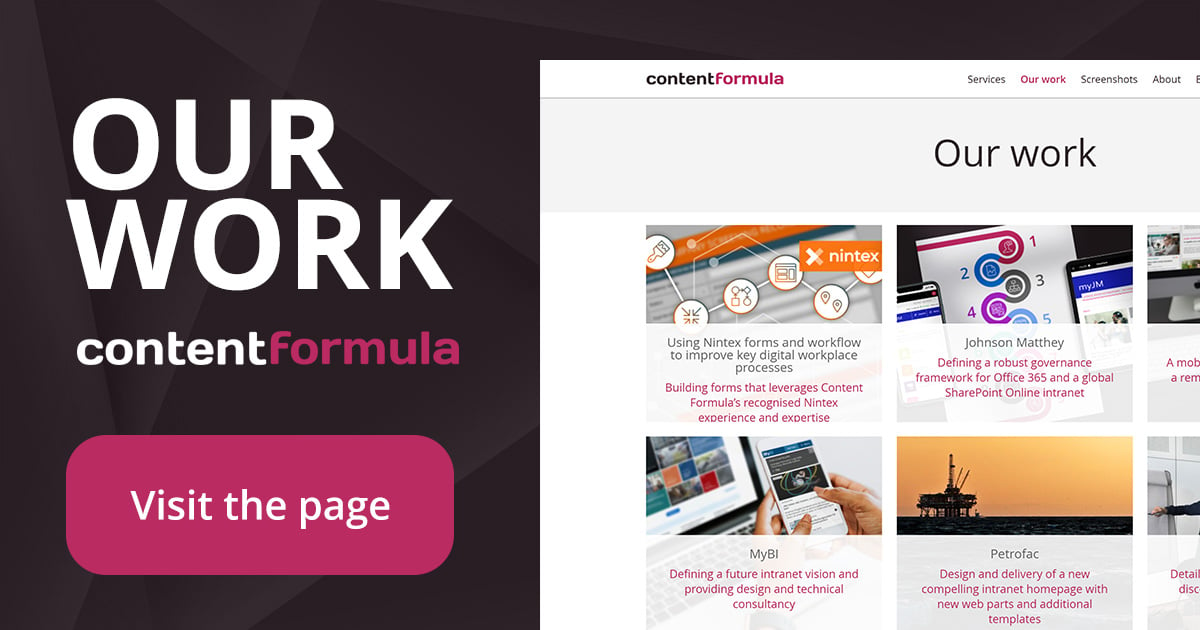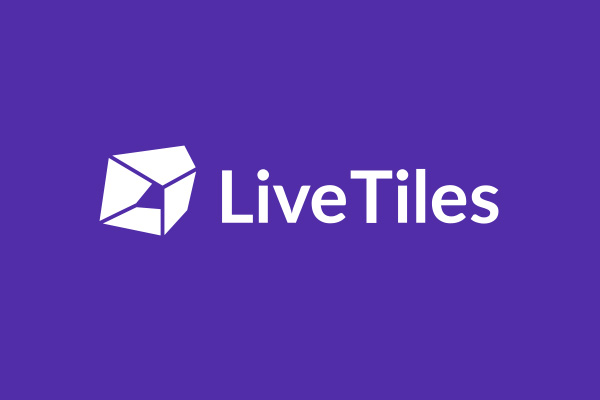We need a new intranet. Where do I start?
Investing in a new intranet, or an upgrade in an existing intranet, is something every organisation needs to do from time to time. But if you’ve never been involved in creating or delivering a new intranet, it can be difficult to know where to start. How to get a new intranet project off the ground is an area we get asked about from time to time, and it is important to ask the right questions and follow the right steps before you dive into a new intranet project.
In this article, we’re going to explore what you need to consider if you are looking to implement a new intranet, and some of the steps you need to take.
We cover:
- The key questions you need to consider and the conversations you need to have before you begin the formal steps in setting up an intranet project.
- The five major steps you need to take to set up your project.
Note that there are no hard and fast rules here, and the way things pan out might actually be quite different; the process of implementing a new intranet is not necessarily linear. However, this article will lay out the kind of areas to think about, as well as the typical steps that we have seen taken across hundreds of intranet projects over the past two decades.
Why intranets need replacing
Before we explore the questions to consider, it’s worth looking at some of the reasons why you might need a new intranet.
Like any technology, intranet software can become end-of-life or need an upgrade. The average lifespan of an intranet can vary from around three to seven years, with a project to launch a new iteration eventually required. However, some intranets can last for over a decade, although this is usually only viable if they receive continual investment. Many intranets need replacing because the value the software delivers depreciates over time, and a new iteration should be expected as a natural consequence of this product lifecycle.
Inevitably, employee, organisational and communications needs will also evolve and change, and sometimes an existing intranet can no longer effectively support those needs. Here, the need to create a new intranet can be very obvious, as employees and stakeholders line up with multiple complaints about finding information or the inability to issue communications. Sometimes, the need for a new intranet is also triggered by a major organisational event such as a merger.
Many organisations are moving to the cloud and investing in Microsoft 365. This change can trigger a desire to implement a new intranet, where a team wants to take full advantage of their investment in the digital workplace with a new SharePoint intranet at the centre.
Very occasionally, there are clients who have never actually had a proper intranet. These may be smaller companies who have never felt the need to implement one, but have now grown rapidly and need to take a more structured approach to information and communications. Quite often there may be a platform that has acted as a kind of quasi-intranet and provided a place for communications and content, albeit delivered in a non-optimal way. Sometimes, there may be a plethora of local solutions which are not optimal.
Five questions to consider
Whatever the reason, you will eventually need a new intranet. If youre in that boat right now, there are some initial questions to consider which can help you initiate the right conversations with the right people to set the ball rolling when setting up a formal project.
1 Do we know what a modern intranet can do?
The word intranet doesn’t normally provoke a wave of excitement (unless you’re an intranet nerd like us), and can even illicit groans. Many people have had bad experiences in their previous organisations where the intranet has been a dreary, static website with out-of-date content where it’s impossible to find anything.
Actually, modern intranets are vibrant, people-centred platforms which help people get their work done, and which fit seamlessly into the wider digital workplace ecosystem. They are a strategic investment which make a real difference, as we have seen during the pandemic, and have a wide range of features. It’s important to get some idea of what a modern intranet can do during conversations so that stakeholders don’t hold negative preconceptions about what an intranet looks like and what it can deliver.
Doing some desk research is a good start in getting an understanding of the intranet market and some of the choices available. There is a lot of information out there on the web about planning an intranet, but it also helps to speak to other companies about what they’ve implemented. There are various networking groups and conferences around, as well as awards and publications with detailed case studies. We’re also happy to talk about intranet options and what a modern intranet looks like feel free to get in touch!

2 What problems is our intranet trying to solve?
To start the right conversations about your intranet and consider its scope, you need to know the why. What problems is your intranet trying to solve? These can be multiple to drive engagement, to enable effective communications, to drive adoption of Microsoft 365 tools, to promote a one company culture, to provide content to help contact centre staff serve customers, to enable frontline communications and many more.
Later, when you carry out user research (see below), this question will be answered in far more detail, but it’s good to have an idea of the general areas you want your intranet to deliver from the get-go.
3 Who is going to own the intranet?
Intranet ownership is a question that people tend to defer until later on, but it actually pays to work this out before you undergo the project, as it will determine the nature and scope of the intranet, as well as the project team involved in the build. The most typical configuration we see is for Internal Communications to own the intranet content, design and strategy, and for IT to own the technology, but other functions owning the intranet can include the digital team, a Knowledge Management function, HR or business operations.
Ownership also implies some responsibility. If a senior stakeholder doesn’t want to take on the responsibility of an intranet, then it is unlikely to be wholly successful. They need to be prepared to pay for some kind of resource to manage the intranet on a day-to-day basis and provide stewardship.
In considering ownership, you may find some stakeholders start to worry about costs, particularly in smaller companies. Ultimately, a good intranet will save you money by increasing efficiency and improving processes. Smaller organisations are unlikely to need a full-time intranet manager, especially if some attention is given to getting the processes, rules and roles associated with the intranet spot-on from the outset.
4 Which stakeholders should be involved?
All great intranet projects have cross-functional support, involvement and alignment to ensure the intranet delivers maximum value. If you’re starting out on a new intranet, it really helps to involve your major stakeholders right from the beginning to understand their needs, views, agendas and roadmap. When you have cross-functional buy-in from day one, you’re setting up good foundations.
Involve your major stakeholders in any initial intranet discussions: IT, Communications, HR, Knowledge Management, major lines of business and your leadership function certainly need to be in the loop. Two other essential stakeholders that are frequently missed out are Legal, Risk & Compliance, and your Facilities / Real Estate team. The former is crucial to ensure you navigate any potential risks, especially if you are in a regulated industry, while the latter is important, particularly in a new era of hybrid working, to make sure your intranet is aligned to how people are going to be working across different locations. At this stage, it will also help to speak to your users and get a sense of what’s important to them, even before you undergo a more formal user research exercise.
5 What kind of intranet or intranet project are you looking for?
It helps to have an idea of the type of intranet that you are looking for, as this will set the expectations across your stakeholders and determine the path to your new intranet.
A related question here is do we actually need a new intranet?, because it’s perfectly possible that the requirement you’re trying to satisfy might not be fulfilled by a new intranet. Perhaps you need an employee communications app to engage your frontline staff, a service portal to ease pressure on your helpdesk or a collaboration and social platform. It’s also possible that you need an intranet refresh or upgrade rather than an entirely new platform, although the extent of that refresh might effectively comprise a new intranet. Your issue might actually be content-related, and could be more to do with an overhaul of your content or your information architecture.
A key decision will be whether you implement an off-the-shelf intranet solution or a more custom-made solution do you buy or build? In the past, this would have been a key decision, but most teams now opt for an off-the-shelf (also known as an in-a-box) solution that delivers a ready-made intranet which has pre-installed templates, designs and features you will need to deliver an enterprise intranet. For example, we implement the market-leading solution from LiveTiles. It’s easy and speedy to implement, and can meet most organisational needs, although in some cases you may require some further limited customisation.

If you’re on a Microsoft 365 path, a key decision will be whether you implement a SharePoint Online intranet. In our view, the answer to this question will almost certainly be yes, as it will allow you to leverage the power of all the other M365 tools such as Yammer and integrate them into your intranet experience. You’ll also be able to access intranet content from Microsoft Teams. If you are likely to be implementing a SharePoint intranet, a further decision is whether you choose to deliver an out-of-the-box SharePoint intranet, rather than using intranet software.
While we would never advocate making a final technology decision before working out your requirements, it is worth thinking that this is the most likely path, as it will help to illustrate the possibilities of a modern intranet that is fully integrated into the core of your digital workplace.

Five steps to start your intranet project
Once you’ve had the right conversations and there is a broad agreement that an intranet project should go ahead, it’s time to take some more formal steps.
 Undertake formal user research
Undertake formal user research
The best intranets are based on a thorough understanding of employee needs and how they work from day to day. What are the pain points? What are the business problems you’re trying to solve? What are employees real world experiences of current technology?
By answering these questions, you can ensure the intranet contains the right features and is designed around how employees actually work, not how you think they do.
Undertaking user research needs to be a formal, structured process which incorporates surveys, interviews, workshops, observation and examining various metrics; it’s different to the more informal conversations you may have had before. You might need to get external help when we implement an intranet for a client we include workshops, interviews and other studies as part of our methodology.
 Construct a strategy and business case
Construct a strategy and business case
Eventually, you’ll need to conglomerate your research and findings into a more formal strategy and potential business case. These may well build upon earlier conversations you’ve had with different stakeholders, and you may also already have some requirements that have emerged from your research.
Many intranet teams make the mistake of rushing into an intranet project without formalising the strategy. Clearly articulating the business benefits of a new intranet and the priority areas are crucial in selling your intranet inside and getting buy-in, making a formal business case, helping external parties in an RFP process and then shaping the requirements and implementation plan.
 Talk to intranet vendors and experts
Talk to intranet vendors and experts
Agencies like Content Formula who understand intranets can help you at all stages of your intranet journey. For example, when we implement a project, we conduct user research, formulate your strategy and even facilitate an exploratory discussion about the value an intranet could deliver for you. We also often talk more informally to prospective clients.
The critical point to remember is that you should always talk to somebody who understands intranets and the process of implementing one. There are some excellent general digital agencies out there, but they may not necessarily have intranet experience or knowledge. Building an effective intranet is very different from building an external-facing website; intranets have multiple uses, and the needs of an internal audience are very different to those outside
Speak to an agency which has a proven record of working with intranets and clearly understands the channel. They will help you in the earlier stages, and can then potentially be on your shortlist of implementation partners when you run a more formal RFP process.
 Select a product and partner
Select a product and partner
At some stage, you’ll need to select a product and an implementation partner; usually, you’ll have a standard approach to doing this in your organisation. Whether you’re running a formal RFP process or something less intensive, take a structured approach to ensure you’re involving the right product and partner. An intranet is a strategic investment, so getting the right tech and people involved is essential.
 Implement a project
Implement a project
Congratulations on getting to this stage! Sometimes it can feel like an age from the early conversations to getting underway with the formal implementation, although we’ve known this to happen within a matter of weeks!
Usually, the formal project is the most straightforward part of your intranet journey, and you’ll easily progress through steps such as appointing the team, setting the timeline and establishing the costs. Generally, intranet projects are much faster-paced than they used to be. Your implementation partner or software vendor should have a set methodology and be able to help you with the actual implementation, including conducting further user research. At this stage, you’ll likely need to start planning your tactics for launch and beyond; always plan for change management, not just during the project, but also to support the intranet once in business-as-usual.
Need advice on a new intranet? Get in touch!
Setting up a new intranet can feel daunting if you haven’t been involved in an intranet project before, but we hope this post has given you some pointers. If you need advice on your new intranet, then get in touch!

